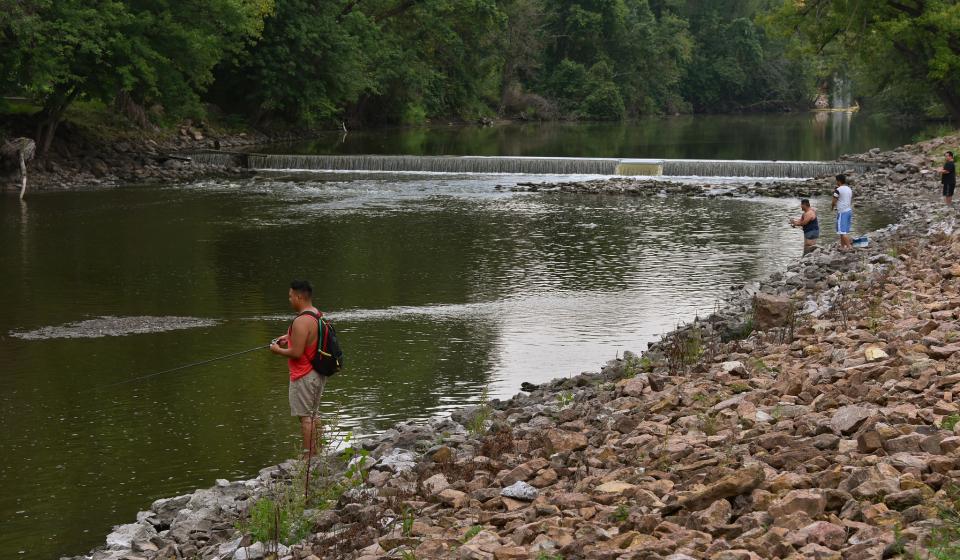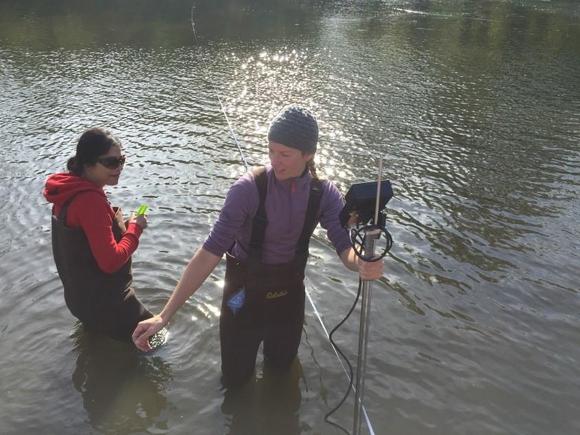By Maria Wardoku
Spring river flooding is something of an annual tradition in Minnesota. Lately those floods have happened more frequently, and been more severe, than in the past. While some towns are wringing their hands about ever worsening flooding, one small town of 4,000 people is finding the silver lining. The City of Watertown in Carver County is beginning to reimagine its relationship with the Crow River, which flows near the community’s downtown.
“[Y]ou hear a lot about the Crow River when it floods,” said Paul Moline, manager of Planning and Water Management at Carver County. “People complain about their stream banks eroding, or roads closing— it’s a negative thing that happens almost every year, sometimes a couple times a year. We’re trying to turn [the river] into. . .more of a positive thing: hey, you can actually get out and use the river!”
The spring thaw and dramatically higher water levels that often bring destruction could—with the right engineering—create an opportunity for recreation, such as whitewater rafting, canoeing or kayaking. And improvements that facilitate recreation in times of high water flow could also greatly improve conditions for fishing all year round.
The prospect of improving the Crow River’s fish habitat was the major impetus for Carver County and Watertown’s interest in rethinking the river. While the river is already a popular fishing spot, there is a lot of room for improvement in terms of fish passage upstream and the overall health of the river. As in many river towns across the country, Watertown’s river has a small dam meant to control water flow and reduce flooding. More and more communities across the country have been removing or altering their dams when they fall into disrepair or prove to be more damaging to the river than helpful. In 2014, at least 74 dams were removed.
At the same time as concern began to build about the effects of the dam on fishing and recreational opportunities, the City of Watertown’s attention was focused on revitalizing its downtown area. When the opportunity arose to partner with the University of Minnesota through RCP, the City felt that the time was ripe to begin laying the groundwork for the river revitalization project. “There’s kind of this heightened awareness and concern about the downtown,” said Watertown City Administrator Shane Fineran. “[The connection to the river] is an extension of the downtown and a connection to the downtown, so things that you can do to enhance, or protect, or preserve, or add to that experience are worth taking a look at.”
There is no quick fix for restoring the flow of the river. There are many factors to consider in reconstructing or even removing the dam: fish passage at high- and low-water levels, whitewater or other recreational features for canoers and kayakers, flood management, stream-bank erosion, and impacts on water levels upstream, to name just a few. To help the city understand the feasibility of different stream restoration models, civil engineering graduate students at the U of MN are conducting an analysis of the possibilities with the support of RCP. The Watertown project benefits the students as well as the city: it serves as the culminating course in the students’ journey to earn certification in stream restoration. “It provides a real direct project for students to have hands on experience in stream restoration. . .and still satisfies all of the elements that we want to do in the class, so it’s perfect for that,” said Professor Vaughan Voller, who is co-teaching the course.
But all the models and measurements in the world mean nothing without community support for altering the flow of the river. That’s where urban planning graduate students at the Humphrey School of Public Affairs come in. Tara Osendorf is part of Dr. Carissa Slotterback’s Designing Planning and Public Participation course, which is taking a look at how to engage stakeholders and the general public in reimagining their relationship with the Crow River. “[The project] seemed like something that you wouldn’t usually get the chance to work on, and I thought that might bring forward some interesting questions in terms of participation,” said Tara. Her team will be helping to design a public participation process to engage community members in the potential redesign of the dam and the waterfront along the river.
More students will be coming on board mid-semester and early next year to assist on other aspects of the project, including one course in Forest Resources that will take on the challenge of analyzing the potential for recreational tourism that might result from redesigning or removing the dam.
For updates on this and other RCP projects as the year-long partnership with Carver County progresses, sign up for the RCP newsletter or follow RCP on Facebook and Twitter.
Maria Wardoku is a Master of Urban and Regional Planning student at the University of Minnesota’s Hubert H. Humphrey School of Public Affairs.

